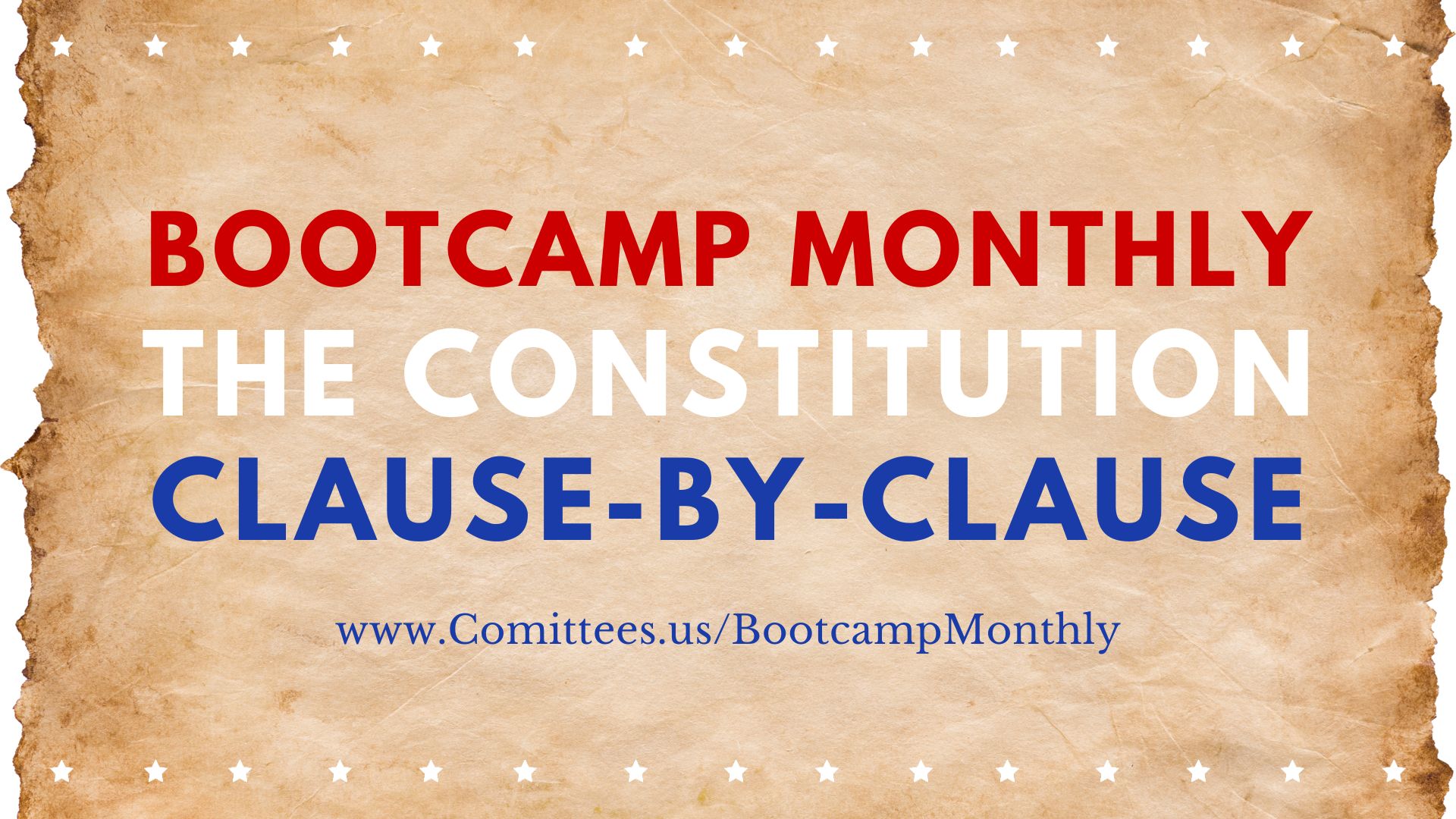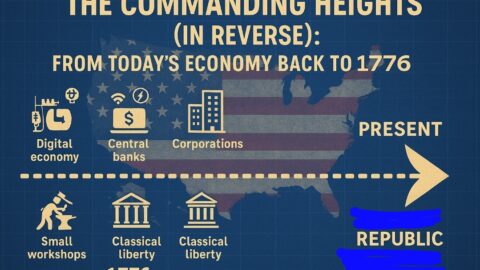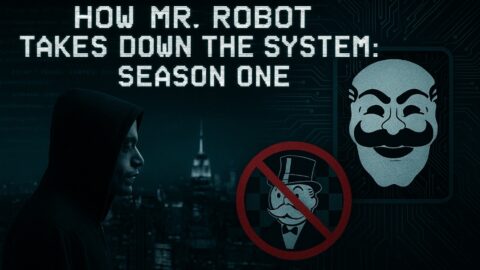Oil is the quiet constant of modern life. It moves our food, wraps our products, powers our logistics, feeds our fertilizers, and—through petrochemicals—threads into medicine, textiles, and plastics. The Corbett Report’s documentary How Big Oil Conquered the World argues that this ubiquity isn’t an accident of innovation but the outcome of a century-plus campaign to shape markets, rewrite institutions, and, ultimately, centralize power. What follows is a tight, readable synthesis of the film’s central storyline and claims.
The Origin Story: From Snake Oil to Standard Oil
The film opens not with derricks but with a con artist: William “Devil Bill” Rockefeller, a traveling peddler of “rock oil” tonics. His son, John D. Rockefeller, absorbs the lesson—out-negotiate, out-maneuver, outlast—and applies it to a real boom after 1859, when Edwin Drake’s well in Titusville, Pennsylvania, proves oil can be drilled at scale.
John D. partners with chemist Samuel Andrews, founds Standard Oil (1870), and pursues control ruthlessly. Secret rail rebates via the South Improvement Company slash his costs; strategic mergers kneecap rivals. By the late 1870s he controls roughly 90% of refining and marketing, drawing the ire of muckrakers like Ida Tarbell and the caricature of Standard as an octopus strangling commerce.
Across the Atlantic, parallel titans arise: Royal Dutch and Shell (backed by Rothschild capital) consolidate Far-Eastern supply; in Persia, a D’Arcy prospect becomes Anglo-Persian Oil (later BP), with the British government taking a controlling stake in 1914. The map of the modern majors is drawn.
In 1911, the U.S. Supreme Court breaks up Standard Oil—yet Rockefeller’s stake in the spun-off companies appreciates so dramatically that, as the film notes, the “punishment” makes him the world’s first billionaire. Lesson learned: a disciplined monopoly mindset, even when legally divided, can outcompete the field.
Engineering Demand: When the Market Doesn’t Choose You, Choose the Market
The ethanol that wasn’t
Early automobiles are genuinely multi-fuel: ethanol and gasoline both vie for the tank. U.S. tests in 1907–1908 find alcohol engines can match gasoline’s economy at the right compression. Henry Ford designs the Model T to run on either. Then Prohibition arrives. Although aimed at drinking, denaturing rules and red tape cripple fuel ethanol’s prospects. Gasoline wins.
Busting the streetcar
Cities once ran on electric trolleys. In the 1930s, General Motors, Firestone, and Standard Oil of California bankroll National City Lines, which buys and tears up streetcar systems in dozens of cities, replacing them with diesel buses. A 1949 antitrust conviction produces trivial fines; a new interstate highway era (with GM and DuPont alumni in key federal posts) cements car culture. Gasoline demand soars.
The film’s point: oil’s dominance isn’t a purely free-market verdict; it’s also the fruit of strategic suppression, policy leverage, and infrastructure bets that tilt choices for generations.
Oil, War, and Money: Securing the Arteries
Mesopotamia and the sea lanes
As Britain shifts its navy from coal to oil in the early 1900s, the German-backed Berlin-Baghdad Railway—and the oil fields flanking it—looks like a strategic nightmare. London financiers and oil interests maneuver into Ottoman concessions through the Turkish Petroleum Company; World War I rearranges control decisively in the Allies’ favor.
The shock that made a system
Fast-forward to 1973. According to the film, a Bilderberg meeting of oil barons, bankers, and political powerbrokers anticipates an “energy crisis.” Months later, the Yom Kippur War erupts, OPEC embargoes, prices quadruple, and U.S. diplomat Henry Kissinger brokers a deal with Saudi Arabia: price oil in dollars and recycle those dollars through U.S. Treasuries. The “petrodollar” is born, shoring up dollar supremacy and funneling oil revenues through Wall Street.
The takeaway: oil flows, military prerogatives, and monetary arrangements interlock. The winners aren’t just companies; they’re systems.
The Soft Power Pivot: Philanthropy, PR, and the Remaking of Institutions
Rockefeller’s name is mud by the early 1900s. Enter Ivy Lee, the father of modern PR, staging newsreels and photo-ops that turn “Senior” into a dime-handing philanthropist. But the film argues the makeover goes deeper: philanthropy becomes a lever to redesign education, medicine, and even food.
School as a factory
Rockefeller bankrolls the University of Chicago and the General Education Board; Andrew Carnegie creates the Carnegie Foundation for the Advancement of Teaching. The film contends that together they steer education away from classical, decentralized learning toward standardized, compliant workforce training—citing statements from Rockefeller adviser Frederick T. Gates about molding a “docile” public. Mid-century congressional inquiries into foundations (the Reece Committee) amplify these concerns.
Medicine, standardized
Carnegie funds Abraham Flexner’s 1910 report reshaping medical education around laboratory science and hospital-based, pharmacological practice—marginalizing botanical and naturopathic traditions. Rockefeller money endows research institutes and medical schools; the film links wartime chemical research to chemotherapy, and traces corporate lineages from I.G. Farben to today’s pharma giants. The punchline: petrochemicals supply both the lab bench and the pill bottle.
Finance, centralized
The 1910 Jekyll Island meeting produces the Federal Reserve blueprint (formally enacted in 1913). Rockefeller heirs later helm major banks (Chase Manhattan, National City), entwining oil money and monetary policy.
Feeding the World—or Owning It? From Green to Gene
The Green Revolution
Backed by the Rockefeller Foundation, Norman Borlaug’s high-yield wheat and maize, coupled with synthetic fertilizers, irrigation, and pesticides, are exported to the developing world. Yields rise in many regions, but so do input dependencies, debt, and environmental stresses (soil depletion, salinization, biodiversity loss). Agribusiness consolidates: ADM, Bunge, Cargill, and Louis Dreyfus dominate trade; chemical firms sell the inputs; aid and credit (via USAID, the World Bank, IMF) nudge countries into the model.
The Gene Revolution
Next comes biotech: GMO seeds patentable by design, promoted by a web of institutes and partnerships (IRRI, CGIAR, ISAAA), with corporate leaders (Monsanto, DuPont, Bayer, BASF) and big foundations (Rockefeller, Ford, Gates) in the mix. Food aid and licensing cascade the technology into new markets. A few countries refuse shipments; many don’t.
The film’s argument: once you control seed genetics, inputs, and distribution, you don’t just sell into the food system—you become the food system.
In One Line
Oil was the gateway drug. The endgame, says the film, is the monopolization of life: energy, money, medicine, education, transport, and food woven into a tight net of corporate-state control—marketed through philanthropy, normalized via policy, and rendered invisible by infrastructure.
Reading This Critically—and Practically
The Corbett Report presents a sweeping, adversarial history. Some claims—like the coordinated choreography of the 1973 shock or the curricular intent behind early 20th-century philanthropy. But the broader pattern it highlights is hard to ignore: infrastructure and institutions lock in paths; the biggest players work upstream (curricula, standards, credit, land use) because that’s where leverage lives.
If the film’s diagnosis resonates, the practical antidotes look like the inverse of centralization:
- Energy diversity: distributed renewables, efficiency, and non-fossil fuels where they make sense.
- Mobility choice: public and active transport that reduce forced car dependence.
- Open science & medicine: rigorous, pluralistic research; transparency around funding and trials.
- Food sovereignty: soil health, local seed systems, farmer autonomy, and fair trade.
- Monetary resilience: diversified savings and payments, thoughtful regulation of systemic risk.
- Civic literacy: follow the money behind standards, curricula, and “public-private partnerships.”
Whether one accepts every plank of the Corbett narrative or not, the core message is clarifying: power often hides in plain sight—beneath our roads, inside our schools and clinics, and in the quiet contracts that govern what we plant, eat, and fund. Seeing those layers is the first step toward shaping them, rather than being shaped by them.
“How Big Oil Conquered the World” — point-by-point
Framing premise
- Oil and petrochemicals permeate modern life—from food and freight to plastics and pharmaceuticals—so “the story of oil is the story of the modern world.”
- Well-known chapters: Rockefeller/Standard Oil; the internal-combustion revolution; Saudi oil; Middle-East wars.
- Less-told chapters (per the film): oil’s role in WWI; petrochemical interests in modern medicine; Big Oil funding of the Green Revolution and later the “Gene Revolution.”
- The narrative’s origin point isn’t the first well in Pennsylvania but “snake oil”: William “Devil Bill” Rockefeller—depicted as a con man—selling “rock oil” tonics and teaching his son John D. hard-edged tactics.
Part 1 — Birth of the “oiligarchy”
The first boom: Drake’s well (1859)
- “Colonel” Edwin Drake (not actually a colonel) drills at Titusville, PA, after surface methods fail.
- On Aug. 28, 1859, he hits oil; kerosene soon lights homes worldwide; a modern oil industry is born.
John D. Rockefeller consolidates power
- Cleveland bookkeeper John D. partners with chemist Samuel Andrews; by 1870 founds Standard Oil.
- Strategy: control transportation costs; secret railway rebates via the South Improvement Company.
- By 1879 Rockefeller controls ~90% of refining, ~90% of marketing, and a large share of production.
- Standard’s octopus-like monopoly is attacked by Ida Tarbell and others; public and legal pressure build.
Global rivals arise
- Rothschilds + Nobels develop Caspian oil; ship via Suez with Marcus Samuel (M. Samuel & Co. → Shell).
- Royal Dutch operates in the Dutch East Indies; merges with Shell (and Rothschild capital) in 1907.
- Anglo-Persian (later BP) emerges from William Knox D’Arcy’s 1908 Iranian strike; UK gov’t buys 51% (1914) at Winston Churchill’s urging.
Gasoline luck + Standard Oil breakup
- Electric vehicles were viable early on, but Spindletop (1901) floods the market with cheap oil, favoring gasoline cars.
- 1911: SCOTUS breaks up Standard Oil—but Rockefeller’s wealth soars as the pieces gain value; he becomes the world’s first billionaire, while Drake dies in poverty.
Film’s takeaway: Early oil barons learn that ruthlessly pursuing monopoly pays; future threats will be neutralized.
Part 2 — “Competition is a sin”
Alcohol fuel vs. gasoline
- Early 1900s engines could run on ethanol; U.S. studies (1907–08) found comparable economy at higher compression.
- Henry Ford designs the Model T to run on alcohol or gasoline; farmers push to repeal alcohol taxes (repealed 1906).
- Film’s claim: Prohibition (1920) indirectly kills fuel ethanol by making denatured (poisoned) alcohol mandatory, tilting the field to gasoline.
Dismantling streetcars (“bustitution”)
- 1936: GM + Firestone + Standard Oil of California form National City Lines; buy and scrap electric streetcar systems, replace with diesel buses.
- 1949 convictions: minor fines ($5,000; an executive fined $1).
- 1950s: Eisenhower appoints GM’s Charles Wilson and DuPont’s Francis du Pont; interstate highways accelerate auto dependence; rail declines sharply.
- Result: Car culture explodes; gasoline sales triple post-WWII.
Geopolitics and oil routes
- Berlin-Baghdad railway: Germany’s land route toward Mesopotamian oil alarms Britain (whose navy is shifting to oil).
- British financiers (via Gulbenkian, Turkish Petroleum Co.) maneuver to capture Ottoman oil rights; WWI resolves control in the Allies’ favor.
1973 oil shock & the petrodollar (film’s account)
- Bilderberg 1973: oil leaders (Rockefeller, Rothschild, BP, Shell, Exxon, Kissinger, etc.) discuss an energy-price “reset.”
- Yom Kippur War → OPEC embargo: prices quadruple.
- Kissinger’s Saudi deal: oil priced in dollars; surplus “petrodollars” recycled through U.S. Treasuries via Wall Street—shoring up dollar hegemony and oil-industry finance.
Film’s takeaway: Cartel power extends from pipelines to policy—weaponizing supply, prices, and currency.
Part 3 — “The world in their image”
Image rehab + philanthropy as strategy
- Ivy Lee pioneers PR for Rockefeller: newsreels, dime-giving photo-ops, Rockefeller Center, etc.
- Thesis: Philanthropy shapes systems (not gifts): education, medicine, money, food—steering society to serve oil-linked interests.
Re-engineering education
- Rockefeller University of Chicago; General Education Board (huge endowment).
- Frederick T. Gates’s vision (quoted): schools to produce compliant workers, not thinkers or creators.
- Carnegie & Rockefeller foundations coordinate; Reece Committee (1950s) testimony (Norman Dodd) alleges foundations funded historians and curricula to tilt the U.S. toward collectivism.
Re-engineering medicine
- Rockefeller Institute hires Simon Flexner; his brother Abraham’s Flexner Report (funded by Carnegie) reshapes medical education—prioritizing drug- and procedure-driven allopathic care, marginalizing naturopathy/homeopathy.
- Standard Oil spinoff products (e.g., Nujol) and petrochemical derivatives enter medicine.
- Sloan-Kettering grows out of Rockefeller/industry ties; wartime mustard gas research morphs into chemotherapy (via Cornelius Rhoads).
- I.G. Farben (with U.S. links to Standard Oil and Wall Street) becomes a chemical/pharma giant; postwar offshoots (BASF, Bayer, Sanofi) dominate global chemicals/pharma.
Money & central banking
- 1910 Jekyll Island: Aldrich, Warburg, Morgan/City Bank reps design the Federal Reserve; established 1913.
- Rockefeller heirs later lead/steer major banks (Chase Manhattan; National City), entwining oil and finance.
Food: Green Revolution → Gene Revolution
- Rockefeller Foundation backs Norman Borlaug’s high-yield seeds + petrochemical inputs; “agribusiness” model scales with public financing and conditional aid (“Food for Peace”).
- Film’s critique: Yield gains are overstated; environmental costs (soil, water, biodiversity) and debt burdens mount; power shifts to ADM/Bunge/Cargill/Dreyfus and chemical suppliers (DuPont, Dow, etc.).
- Gene Revolution: GM crops (Monsanto, Bayer, BASF, DuPont) promoted via a web of institutes (IRRI, CGIAR, ISAAA) and foundation/government partnerships; food aid and licensing embed dependence; some nations resist (e.g., Zambia, Angola).
Conclusion — the film’s core claims
- The “oiligarchy” matured from industrial monopolists into system designers, using PR and philanthropy to reshape education, medicine, finance, transport, agriculture, and geopolitics in ways that entrench their power.
- Oil was the entry point, but the objective (per the film) is broader: monopolizing life—controlling the inputs, institutions, and narratives that determine how society functions.
- The next phase (hinted at): extending control over biology itself (“monopolization of life”) through genetics and related technologies.
Quick timeline (at a glance)
- 1859 Drake well → modern oil boom.
- 1870–1911 Standard Oil rise → antitrust breakup (Rockefeller wealth grows).
- 1901 Spindletop; gasoline era accelerates.
- 1907–14 Global majors (Royal Dutch/Shell; Anglo-Persian) form; UK stakes in Persian oil.
- 1911 Standard Oil dissolved; 1913 Federal Reserve created.
- 1920s–50s Prohibition; streetcars dismantled; interstate highways; car/oil dominance.
- 1940s–60s Postwar petrochemicals; medical/educational overhauls; agribusiness ascends.
- 1973–74 Oil shock; petrodollar system.
- 1990s–present GM crops expand; foundations/consortia promote “Gene Revolution.”





